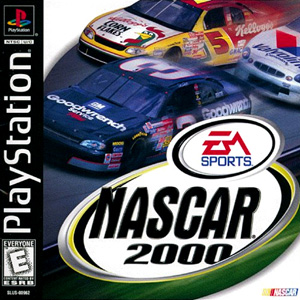
NASCAR 2000 is a racing simulator video game developed by Stormfront Studios and published by EA Sports.

Vigilante 8 is a vehicular combat video game developed by Luxoflux and published by Activision for PlayStation, Nintendo 64, and Game Boy Color. Although officially it has no connection to the Interstate '76 series, it features several of its themes.

NBA Live 2000 is the 2000 installment of the NBA Live video game series. The cover features Tim Duncan of the San Antonio Spurs. The game was developed by EA Sports and released in 1999. Don Poier is the play-by-play announcer with Reggie Theus on color commentary. The game features Michael Jordan in his first official appearance in the series. The PC version of the game introduced EA's "Face in the Game" feature, allowing players to use custom facial photographs on created players. It was also the final NBA Live game released for Nintendo 64. NBA Live 2000 is followed by NBA Live 2001. A cancelled Game Boy Color version was in development by Handheld Games for THQ, but it was scrapped during testing.
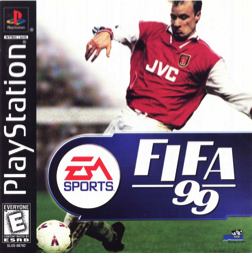
FIFA 99 is a football simulation video game developed by EA Canada and published by Electronic Arts under the EA Sports label. It is the sixth game in the FIFA series and was released in 1998 for Microsoft Windows, PlayStation and Nintendo 64.

Madden NFL 99 is a football video game released for the PlayStation, Nintendo 64 and Microsoft Windows. It is the first multiplatform Madden game to be fully 3D and polygonally based and is also the first game to feature Franchise mode. The game's commentary is by John Madden and Pat Summerall. The American version of the game features John Madden himself on the cover, while the European version uses Garrison Hearst instead. The game was the top-selling PlayStation sports video game in 1998 in North America, having sold 1.1 million copies on the PlayStation.

Madden NFL 2000 is a football video game. This was the second of the Madden NFL games to not solely feature John Madden on the cover in North America. The only other one was Madden NFL '95. Most versions of the game cover featured Madden prominently in the foreground, and a recognizable Barry Sanders in a background action graphic. The European PAL edition features only Dorsey Levens on the cover.

NBA Live 99 is the fifth installment of the NBA Live video games series. The cover features Antoine Walker of the Boston Celtics. The game was developed by EA Sports and released on November 4, 1998, for the Nintendo 64, and then on November 10, 1998, for the Windows and PlayStation. Don Poier is the play-by-play announcer. It was the first NBA Live game released for Nintendo 64. NBA Live 99 was followed by NBA Live 2000.

All-Star Baseball 99 is a video game developed by Iguana Entertainment and Realtime Associates Seattle Division and published by Acclaim Entertainment for the Game Boy and the Nintendo 64 in 1998. The game's cover features Colorado Rockies outfielder Larry Walker.
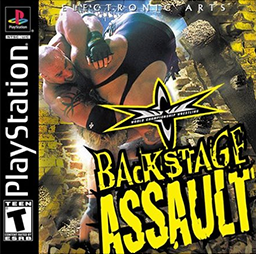
WCW Backstage Assault is a professional wrestling video game developed by Kodiak Interactive and published by Electronic Arts. It was released for the PlayStation in November 2000, and for the Nintendo 64 in December. It was the final World Championship Wrestling (WCW) game released before the World Wrestling Federation (WWF) purchased the company's assets three months later. Backstage Assault features commentary by Tony Schiavone and Bobby "The Brain" Heenan. The game is distinguished by the fact that all gameplay takes place outside of a standard wrestling ring, an approach that was poorly received, and resulted in the title selling 200,000 copies.

WWF Attitude is a professional wrestling video game based on the World Wrestling Federation released by Acclaim Entertainment in 1999 for the PlayStation and Nintendo 64. A slightly enhanced port of the game was later released for the Dreamcast, as well as a handheld version for the Game Boy Color. The game is named after the WWF's then-current "Attitude" marketing campaign, with the tagline "Get it" also being used on company programming during that period.

Nagano Winter Olympics '98, known in Japan as Hyper Olympics in Nagano, is a multi-event sports game from Konami. It is based on the 1998 Winter Olympics and features 10 Olympic events including skating, skiing, luge, bobsleigh, slalom, curling, halfpipe and snowboarding. The game is part of the Track & Field/Hyper Sports series and would be the last licensed Olympic video game released on a Nintendo home console until Mario & Sonic at the Olympic Games about nine years later.
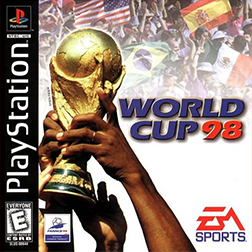
World Cup 98 is a football video game released in 1998 to coincide with that year's FIFA World Cup football tournament, developed by EA Canada and published by Electronic Arts under their EA Sports label. It is the first official FIFA World Cup game developed by EA Sports after obtaining the rights from FIFA in 1997. Unlike the previous World Cup games, which were in 2D and showed a bird's-eye view, World Cup 98 used a 3D engine, utilising DirectX for the PC version.

NHL 99 is an ice hockey video game developed by Electronic Arts Canada. It was released in September 1998 and was the successor to NHL 98.

All Star Tennis '99 is a simulation tennis game for the Nintendo 64, PlayStation, and Game Boy Color released in 1999, that was developed by Smart Dog and published by Ubi Soft. The featured player on the US and Europe versions is Michael Chang while in the French version the featured player is Yannick Noah who has his name above the title as Yannick Noah All Star Tennis '99. It was one of the first tennis games for the N64 and the only one for that system in the USA until Mario Tennis. It was preceded by Let's Smash/Centre Court Tennis in Japan and Europe, for the Nintendo 64, while being one of many tennis games on PlayStation and Game Boy Color.

Monaco Grand Prix: Racing Simulation 2, also known as just Monaco Grand Prix or Racing Simulation: Monaco Grand Prix, is a Formula One racing game developed and published by Ubisoft for the Windows, Nintendo 64, PlayStation, and Dreamcast. It was released in 1998–1999. A sequel, Racing Simulation 3, was released in 2002.

NBA In The Zone '99, known in Europe as NBA Pro 99, is a basketball game for the Nintendo 64 and PlayStation, released in 1999. It is the fourth installment of the NBA In The Zone series. The game has two covers of NBA All-Star Glen Rice,.
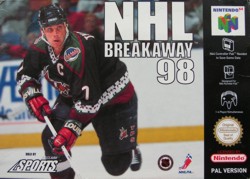
NHL Breakaway 98 is a 1997 ice hockey video game for the PlayStation and Nintendo 64. It was the first hockey game to come from Acclaim Entertainment and the first game released under the publisher's new Acclaim Sports label. The game met with divisive reviews upon its release for the PlayStation, though the game's management mode and its system of using points to improve aspects of a team received widespread praise, but reviews for the later Nintendo 64 version were more consistently favorable. It was followed by a sequel, NHL Breakaway 99, released the following year.
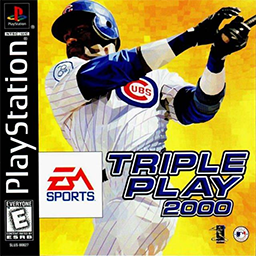
Triple Play 2000 is a baseball sports game released for the PlayStation, Nintendo 64 and Microsoft Windows in 1999. It is the only game of the Triple Play series released for the Nintendo 64 where it was released in North America. It features the 1999 rosters and 1998 stats which included Sammy Sosa's 66 HR and Mark McGwire's 70 home runs.
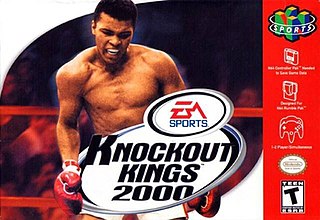
Knockout Kings 2000 is a video game developed by Black Ops Entertainment and published by EA Sports for Nintendo 64, PlayStation, and Game Boy Color in 1999.

NFL Blitz is an American football video game developed and published by Midway for the arcade in 1997, the first game in the NFL Blitz series. The development team was headed by Mark Turmell and Sal Divita, who were known for being behind NBA Jam, and NFL Blitz was a deliberate attempt to translate the exaggerated arcade-style approach of NBA Jam to the football realm. The game was ported to the PlayStation, Nintendo 64, Windows, and Game Boy Color in 1998. The cover athlete for the game was then Pittsburgh Steelers quarterback Kordell Stewart.




















